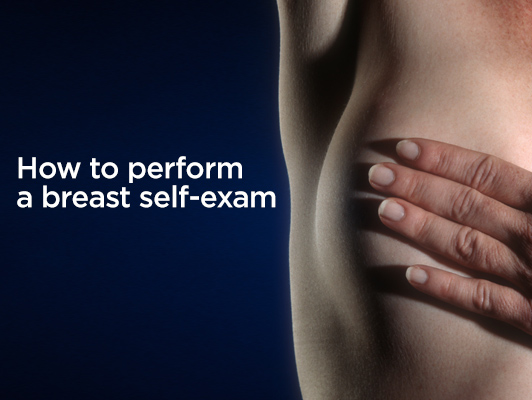How to perform a breast self-exam
As many of you know, October is dedicated to breast cancer awareness and helping women take control of their health and wellness. Breast health is very important, and breast self-exams are an important piece of the puzzle when it comes to detecting breast cancer and other health issues. Although breast cancer can be scary or uncomfortable to discuss, the more you know about breast exams and what to look for, the more likely you are to catch any issues as early as possible.
According to the Johns Hopkins Medicine website, “Forty percent of diagnosed breast cancers are detected by women who feel a lump, so establishing a regular breast self-exam is very important.” You should complete breast self-exams once a month several days after your period ends, so your breasts are not swollen or tender. You can also choose a day that is easier to remember, like the first or last day of the month.
Here are five steps to performing a breast self-exam:
Step 1: Look at your breasts in the mirror with your arms on your hips. Note if your breasts are their usual size, shape, and color. If you notice any swelling, dimpling, puckering of the skin, nipples that have changed position, redness, soreness, or rashes, bring it to your doctor’s attention.
Step 2: Next, look at your breasts with you are raised above your head, and look for the same changes as step 1.
Step 3: While you are at the mirror, look for fluid or discharge coming out of one or both nipples. It could be watery, milky, yellow fluid or blood.
Step 4: The fourth step to a breast self-exam is examining your breasts while lying down. Use your right hand to feel the left breast and your left hand to feel the right. Use the pads of your fingers to make small circular motions. Feel the entire breast, use different pressures to feel the deeper layers of the breast (for the skin and tissue just beneath, use light pressure; use medium pressure for tissue in the middle of your breasts; use firm pressure for the deep tissue in the back).
For steps 4 and 5, look and feel for:
- Nipple tenderness or a lump or thickening in or near the breast or underarm area.
- A change in the skin texture or an enlargement of pores in the skin of the breast (some describe this as similar to an orange peel’s texture).
- A lump in the breast. (If you find a lump, don’t panic! All lumps should be investigated by a health care professional, but not all lumps are cancerous.)
Step 5: Last, feel your breasts while standing or sitting. Some women find the shower is a great place to perform this aspect of the breast self- exam because the skin is slippery. Using the same technique as in step 4, feel and examine both breasts.
Reference: http://www.breastcancer.org/symptoms/testing/types/self_exam/bse_steps




